Civic Museums of Iglesias

CIVIC MUSEUMS TOUR The Civic Museums tour includes visits to two museums: the Mining Art Museum and the Mineralogy Museum, both located in the Mining Institute Museum. These museums aim to preserve and showcase all the tools that in the past allowed miners to master the rock, becoming the creators of a mining culture that for centuries was the center of the city’s social and economic life. Inside the Mining Institute Museum, you can see machines that were already used in mines at the end of the 1800s, as well as approximately 400 meters of educational galleries built by the institute’s students starting from 1934. The entire museum collection consists of nearly 3800 mineralogical, petrographic, and fossil specimens from around the world, enriched by a collection of about a hundred archaeological artifacts from mining activities dating back to the Nuragic, Phoenician-Punic, Roman, Pisan medieval, and Aragonese periods. The Civic Museums Tour can be combined with the Historical Center Tour.
Iglesias Old Town

DISCOVER THE HISTORICAL CENTER OF IGLESIAS WITH OUR GUIDES Starting point: Iglesias Tourism Office, Piazza Municipio, 1, 09016 Iglesias SU Duration: 1 hour Explore the historical center of Iglesias on foot with our tour guides. Iglesias represents the testimony of a glorious past, that of a city formerly known as the Villa di Chiesa. Take a stroll through the streets of the historical center and admire the wonders of the city: from the churches to the Pisan walls; from the museums to the grand squares, gathering places for citizens and tourists. Let yourself be carried away by our guides who will tell you the history of the city, its main attractions, and some anecdotes about the daily life of the ancient Villa di Chiesa. The Historical Center Tour can be combined with the Civic Museums tour, which includes a visit to the Mining Art Museum and the Mineralogy Museum.
Porto Flavia

Porto Flavia is an unmatched monument of industrial archaeology. It is a mining structure that is no longer operational, overlooking the beautiful southwestern coast of Sardinia. Every year, tens of thousands of visitors from all over the world are fascinated by the work that revolutionized the system of mineral transport in the 20th century. 1. THE HISTORY OF PORTO FLAVIA Despite being part of the Masua mining complex, Porto Flavia has never been a mine, but rather a shipping port for material extracted from nearby mines. The port was designed by the Venetian engineer Cesare Vecelli and built in 1924. In just two years, an unprecedented mining engineering work took shape and was named after the engineer’s eldest daughter, Flavia. The construction The work was carried out by excavating two overlapping tunnels inside the mountain. The upper gallery was used to unload the extracted materials, and the lower one to load them onto ships through a retractable conveyor. Between the two galleries, nine enormous silos were installed, capable of holding up to 10,000 tons of mining material. The port remained operational until the 1960s when it was gradually abandoned with the termination of mining activities in the area. In the 2000s, Porto Flavia underwent a restoration intervention and is currently open to tourists through guided tours. 3. HOW TO GET THERE To reach Porto Flavia, take the State Road 130 Iglesiente to Iglesias, then take the State Road 126 Southwest Sardinia towards Gonnesa. Just before arriving in Gonnesa, take Provincial Road 83 following the signs for Masua and Porto Flavia. Near the mining site there is a small parking fee, after about 200 meters walk you reach the ticket office. 4. TICKETS AND USEFUL INFORMATION For safety reasons, access to the mining site is limited, so it is strongly recommended to purchase tickets in advance. Tickets for the guided tour of Porto Flavia can be purchased: Due to extraordinary maintenance works, visits to Porto Flavia mining site will take place only in the upper gallery up to the sea overlook.Until further notice,the tour will still have the same duration, which is 50 minutes.We apologise for the inconvenience caused. English tour at 11 am – 12 am – 2 pm – 4 pm – 6 pm The guided tour lasts about 50 minutes and takes place on a fairly regular dirt path. For this reason, with the necessary evaluations applicable to individual cases, the site is accessible, with the presence of a guide, to those with motor disabilities. It’s recommended to arrive at the ticket office, with the paper or digital ticket receipt, 15 minutes in advance. Latecomers will not be admitted and will not be entitled to a refund. We also recommend sporty clothing and it is mandatory to have closed and comfortable shoes. Mandatory clothing suitable for visiting a museum site (no swimsuits, heels and flip-flops).Pets are not allowed, children under one year of age must be transported with the use of a front baby carrier and a small protective headgear that will be provided by on-site staff. PRICES Full: 10.00 € Reduced (children aged 6/12 and seniors +65): 6.50 € Groups (at least 20 adults): 8.00 € Schools: 6.50 € (not available for purchase online) For groups larger than 20 people, please contact the Tourism Office. INFORMATIONS Address: Ufficio del Turismo Piazza Municipio, 1 – 09016 Iglesias – SU Telephone: +39 0781 274507 E-mail: infoturistiche@comune.iglesias.ca.it Telephone or email reservations are not accepted. 5. WHAT TO SEE NEAR PORTO FLAVIA Porto Flavia is one of the wonders of the Iglesiente coast, but it is not the only one. Here are other suggestive places to visit nearby: Pan di Zucchero It’s the highest sea stack of the Mediterranean with its 133 meters of height. You can admire it from Porto Flavia, Masua beach or from the sea. In limited periods it’s also a popular destination for for rock climbing enthusiasts. Masua Beach Masua beach is located in Iglesias. It’s a beach with fine golden sand. The sea has a mainly sandy bottom and a different color depending on the reflections. Laveria Lamarmora It is a former facility that was used for sorting and washing minerals, a task predominantly carried out by women. Today, the structure, or at least what remains of it, dominates the magnificent Nebida cliff and is one of the favorite backgrounds for souvenir photos in the Iglesiente area.
Linasia Botanical Garden

Located inside the Foresta Demaniale di Marganai (Marganai State Forest), the Linasia botanical garden (named after the Linas mountain range) covers an area of approximately 9,000 square meters and reconstructs the physical environments and phytosociological associations of the territory. The garden was created next to renovated mining buildings to house a guesthouse. It hosts numerous local botanical species, some of which are quite rare and present in the wild, such as the Monte Linas Helichrysum or the Sulcis thistle. The various species of plants, shrubs, and flowers have been labeled to make them easier for visitors to recognize. Additionally, a section of the botanical garden is dedicated to butterflies with specimens of plants on which they can more easily flutter. INFORMATION Guided tours are available during certain periods of the year. For more information, please contact the Ente Foresta at +39 0781 20060 Address: Foresta demaniale del Marganai Telephone: +39 0781 20060
Marganai Park

The Foresta Demaniale di Marganai (Marganai State Forest) is part of the “Parco naturale di Monte Linas, Marganai-Oridda, Montimannu” (Natural Park of Monte Linas, Marganai-Oridda, Montimannu), as it is considered area of landscape interest. The vast forest (3,650 hectares in the eastern and northern sectors) is crossed by numerous paths, many of which are very suggestive. Long forest dirt roads and paths run through the old mining villages of Arenas, Malacalzetta, Baueddu, Reigraxius, and wide cart tracks climb towards the peaks of Punta San Michele and Punta Campu Spina. Inside, there are waterfalls and caves of considerable naturalistic interest such as the Grotta di San Giovanni (San Giovanni Cave) and Su Mannau, as well as paleontological evidence and archaeological monuments such as the Punic-Roman temple of Antas. The vegetation is characterized by holm oak, cork oak, and yew forests, while the understory is rich in vegetation: holly, strawberry tree, mastic, thyme, lavender, and cistus. Among the animal species, we find hedgehogs, foxes, wild boars, wild cats, imperial crows, golden eagles, kestrels, peregrine falcons, martens, deer, and mouflon sheep. The presence of griffon vultures and Bonelli’s eagles is also reported. The park area can be accessed through a road that leads from the entrance of the city of Iglesias to the “old Marganai station” or from the SS 126 Iglesias-Guspini, turning towards the village of San Benedetto and then continuing on the road that leads to the “Case Marganai” location.
Nebida viewpoint

The panoramic road is an all-paved loop, with the outer side protected by a railing. The Belvedere allows you to admire the coast and enjoy a breathtaking view. You can appreciate Pan di Zucchero and the three smaller sea stacks but also the ruins of the area’s mining past, in particular, the Laveria Lamarmora.
Pan di Zucchero

In the far southwest of Sardinia, just a few meters from the coast, the tallest sea stack in the Mediterranean rises suspended in the middle of the sea: Pan di Zucchero. Pan di Zucchero is one of the most imposing and spectacular natural monuments on the island, a symbol of the coast of Iglesiente. It owes its name to its resemblance to the famous Pão de Açúcar in the bay of Rio de Janeiro, which replaced its original Sardinian name Concali su Terràinu in the 18th century. It is easily reached by boat, and once you reach the rocky walls, climbing lovers, with proper equipment and support from specialized guides, can climb 133 meters. Once at the top, you will have a clear view of the three smaller sea stacks, two of which are known as s’Agusteri and il Morto. All four sea stacks in Masua, resulting from marine erosion that caused them to detach from the mainland, are composed of almost pure Cambrian limestone. From the top of the sea stack, in addition to the three smaller ones, you can enjoy an excellent view of the wild charm of the coast. Just in front of Pan di Zucchero, suspended halfway up the sheer rock face over the sea, is the entrance to the mining tunnel of Porto Flavia. This is a complex of underground tunnels that finish inside a building carved into the cliff at the beginning of the 20th century. The view of the sunset from the coast, framing the imposing rock formation, is not to be missed. It is a sunlight show that radiates from the limestone silhouette with all shades of yellow and orange.
Blue Cave (Grotta Azzurra)

Grotta Azzurra is one of the many caves that open onto the sheer sea walls of the coast. It stands out from the other coves for its extreme beauty and uniqueness. A marine cave nestled between a deep blue sea and the cliff. Inside, it offers visitors a spectacle of kaleidoscopic colors, the result of light reflected on the white limestone and, in turn, on the water. Grotta Azzurra is also called Grotta di Sardegna (Sardinia Cave), precisely because, once inside, if you turn your gaze towards the entrance, you will be amazed as it seems to trace the contours of Sardinia.
Castello dell’Iride

Castello dell’Iride is the perfect place for climbing enthusiasts. The cliff is located in Nebida and is a real gem nestled among the rocks. The wall is made up of limestone slabs and for climbing enthusiasts, it is one of the most appreciated cliffs in Southern Sardinia. Its exposure is southeast: in summer it’s in the shade starting from around 4 pm.
Bega sa Canna Beach

The beach of Bega Sa Canna is located in the town of Masua, a small center in the municipality of Iglesias. The small beach enjoys an excellent view of the Pan di Zucchero sea stack and extreme privacy, being rather isolated and moderately frequented. The sand of Bega Sa Canna is coarse, a natural mix of sand, shells, and pebbles, in light gray tones. The beach is characterized by the presence of rocks and boulders that emerge from both the sand and the sea, but above all by the beautiful crystalline sea which, depending on the sunlight, varies its colors from emerald green to blue.


